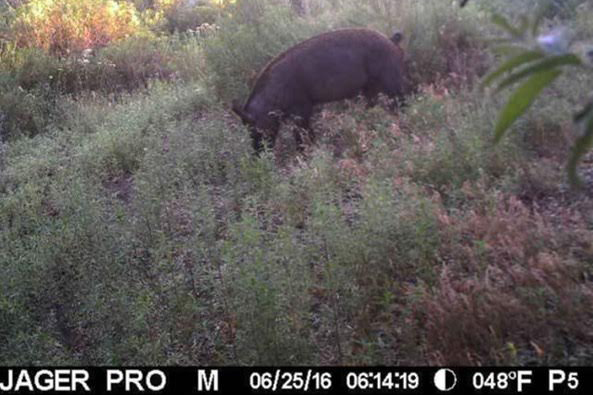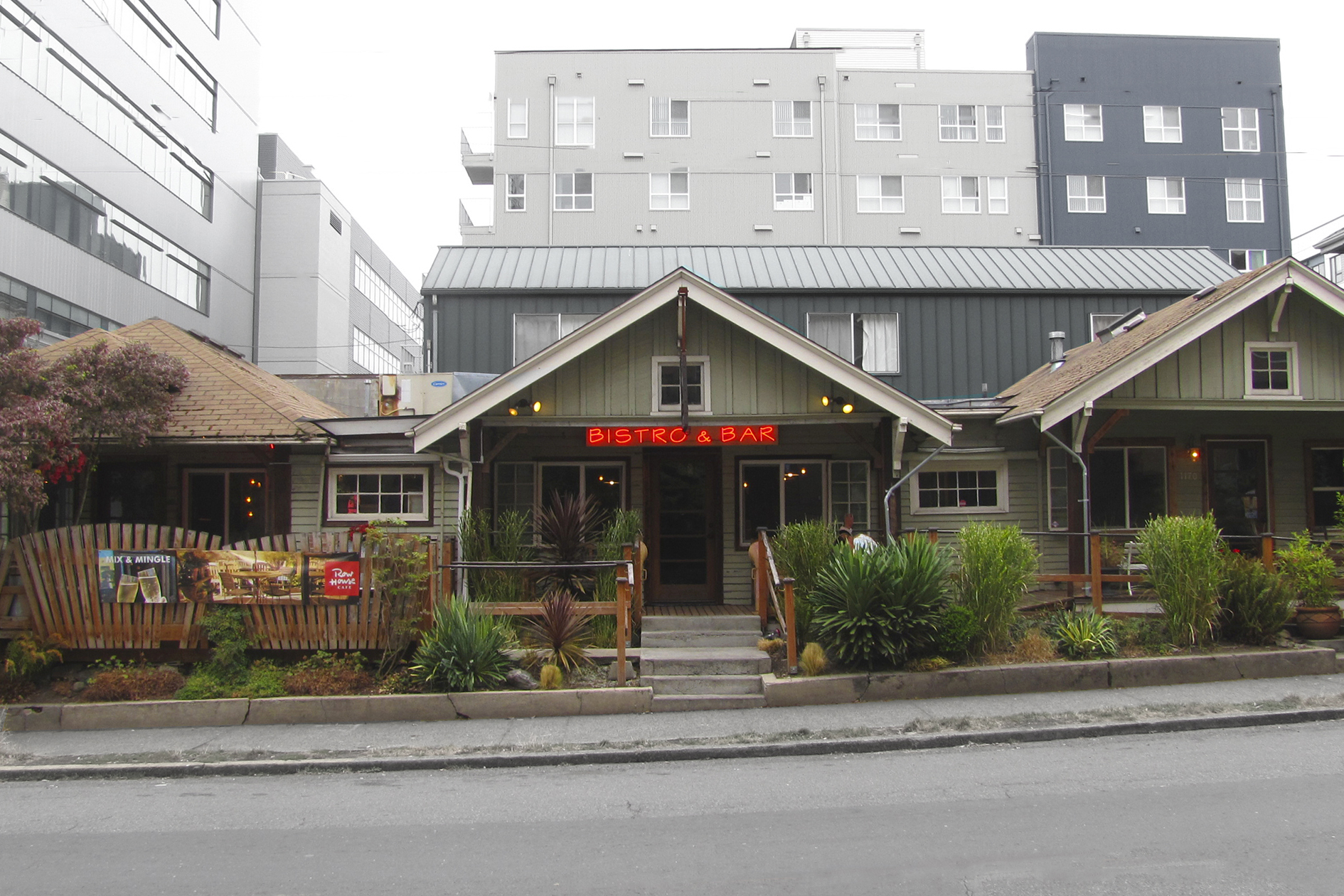As a youngster, I raised two pigs to slaughter as part of the FFA program through my junior high school.
I remember being particularly surprised with what ease and efficiency my pigs were able to turn up all the soil in their pen; they were like little rototillers. After only a few days, the animals had turned what was previously a flat, grassy enclosure into a quagmire from the trenches of WWI that could only be traversed with rubber boots. While the process of raising two pigs was ultimately a rewarding one that I will remember fondly, it did impress upon me two things: The first, pigs can be wildly destructive to to their surroundings; the second, pigs bite. They bite hard. The latter lesson was learned while trying to separate two angry hogs at the Puyallup Fair.
In many of the southern states, feral swine pose a huge threat to the local ecology, not to mention the personal property of anyone unlucky enough to have them on their land. The animals ravage farmlands, destroy crops, dig out wallows, erode the banks of irrigation ditches and generally wreak havoc upon whatever else crosses their path. It’s estimated that feral pig damage and control efforts costs the U.S. economy $1.5 billion annually. Which makes it easy to understand why the Washington Department of Fish and Wildlife reacted to reports of wild pig sightings out near Ephrata as if ISIS had just opened up a training facility next door to Cabelas.
Last week, the last of several feral pigs reported in the Columbia Basin Wildlife Area was tracked down and killed by USDA Wildlife Service officials armed with a helicopter and a shotgun. The finale came after a fruitless, two-day helicopter chase of the animal.
Where the hell did they come from? A couple ways, says Laurence Schafer, the staff wildlife biologist for the USDA Wildlife Services in Olympia.
“Feral swine can swim across the Columbia River and enter from Oregon, or they could enter from British Columbia,” he says.
Border issues aside, though, Schafer says the pigs sighted near Ephrata looked to be just regular old farm pigs. Schafer cites the swine’s lack of tusks to support that conclusion. In the wild, boars grow four sharp tusks which can get up to five inches long. Farm boars usually have these teeth removed as a preventative measure. Schafer also noted that the animals didn’t initially scatter at the sight of humans, indicating they had likely encountered humans in a domestic capacity.
This information coupled with the fact that they seemed to be “ridiculously well-fed” (two of the animals topped 300 pounds) all pointed to either farm escapees or a disgruntled farmer letting his animals out on purpose.
“There’s really no way to determine whether somebody’s releasing them or they’re escaping,” Schafer says.
Still, farm pigs are just one generation removed from fully feral ones, and the government isn’t taking any chances.
Washington State law is very clear on free-range pigs: Any pig outside captivity in Washington is breaking the law and therefore subject to quick, helicopter-facilitated annihilation.
Looking to the explosions of feral pig populations, particularly in Texas, Department of Fish and Wildlife and USDA officials aren’t waiting for the problem to reach its full potential.
“The worst-case scenario we are trying to avoid can be found in Texas,” says Justin Bush, executive director of the Washington Invasive Species Council. “Currently, there are estimated to be 2.6 million hogs spread across 95 percent of Texas’ counties.”
Hunters can even join the cause. With hunting season fast approaching, many sportsmen will be heading down to the Columbia Basin Wildlife Area, close to where the pigs were reported. According to Schafer, the Department of Fish and Wildlife does not classify feral swine as game animals, meaning hunters are well within their legal right to pop a cap in a wild pig.
That said, the Washington Invasive Species Council prefers that hunters report the animals to WDFW via their “Squeal on Pigs Hotline” (888-268-9219) instead of taking the animals out themselves. This is for two reasons: While processing feral swine, hunters risk exposing themselves to unsavory diseases like brucellosis and pseudorabies, not to mention potentially spreading these diseases to pets, children and livestock. The other reason is because large groups of feral swine (called sounders) have a tendency to scatter when one of them gets shot, making the Department of Fish and Wildlife’s job rounding them up much more difficult.
Schafer and Bush say that eliminating feral swine will help protect everything from fish to cherries in Washington state.
“We want folks to understand the ability for these pigs to cause damage when we get them into aquatic habitats” Schafer says. “They can really tear up wetlands, they wallow in stream beds and cause erosion and in our efforts to protect salmon. I would hate to see pigs get in there and cause damage to areas we have to protect salmon.”
Adds Bush: “Our analysts believe that feral swine if well established, could impact row crops including potatoes, grapes, pears, apples, and cherries. They could also impact hay, wheat, grains, and hops by rooting.”
As if destroying our fair state wasn’t enough, the bastards will take out the most important ingredients for making beer!








